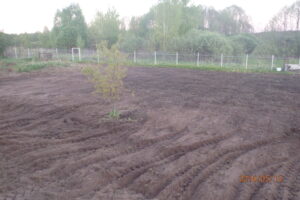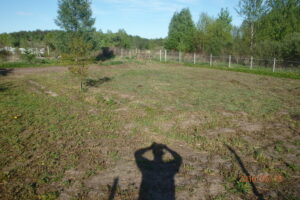
Leveling soil land we mean grading or making terraces – if necessary and make plot of land more valuable, we mean – investing in the land plot.
- First is investigation of a plot and making a project
- Clearing surface from unwanted grass or bushes, from garbage or debris
- Rise level may be significant if ground water is near surface
- Grading and making or restoring fertile layer
- Terracing and retaining wall making, when it might be useful.
Leveling soil land is a crucial process for anyone looking to optimize the use and value of their property, whether for agricultural purposes or personal use. This process, also known as grading or making terraces, involves creating a level surface or a series of steps on sloped land. Here’s why leveling is essential and how it can transform a plot of land into a more valuable asset.
How to estimate costs of land plot filling and levelling?
The Necessity and Benefits of Leveling
Leveling land is necessary for several reasons. Primarily, it enhances the usability of the land by making it easier to manage and more suitable for various uses, such as agriculture, construction, or landscaping. A well-leveled plot improves water drainage, reduces soil erosion, and prevents waterlogging, which can otherwise damage crops or structures. By investing in leveling, you are effectively increasing the land’s functionality and market value, making it a wise investment for future development or resale.
Investigating and planning of work
The first step in the leveling process is a thorough investigation of the plot. This includes surveying the land to understand its current topography, soil type, and drainage patterns. Based on this information, a detailed project plan is developed. This plan outlines the steps needed to achieve the desired level and ensures that the process is efficient and effective.
Clearing the surface of a plot
Before any leveling work can begin, the land must be cleared of unwanted vegetation such as grass, bushes, and trees, as well as any garbage or debris. This step is crucial as it prepares the surface for grading and ensures that the underlying soil is exposed and ready for modification.
Raising the ground level if necessary

In some cases, it may be necessary to raise the ground level significantly, especially if the groundwater is near the surface. Raising the ground level helps to prevent issues with waterlogging and ensures that the soil remains fertile and usable for planting or building. This process involves adding layers of soil or other materials to elevate the surface to the desired height.
Grading and fertile layer restoration
Grading is the process of smoothing the land and creating a uniform slope to facilitate proper drainage. This step is followed by the restoration of the fertile layer of soil, which may have been disturbed during the grading process. Ensuring that the topsoil is rich in nutrients is vital for the growth of plants and the overall health of the land.
Terracing and retaining walls
On sloped land, terracing can be particularly useful. This involves creating a series of flat, horizontal steps or terraces, which help to reduce soil erosion and manage water flow more effectively. In addition, retaining walls may be constructed to support these terraces and prevent soil from slipping. These walls are not only functional but can also add an aesthetic appeal to the landscape, further increasing the property’s value.
Leveling soil land is a comprehensive process that significantly enhances the usability, aesthetics, and value of a property. From initial investigation and planning to clearing, grading, and creating terraces, each step is crucial in transforming a plot of land into a more valuable and functional asset. Investing in land leveling is a smart move for anyone looking to improve their property’s potential and ensure a higher return on investment.